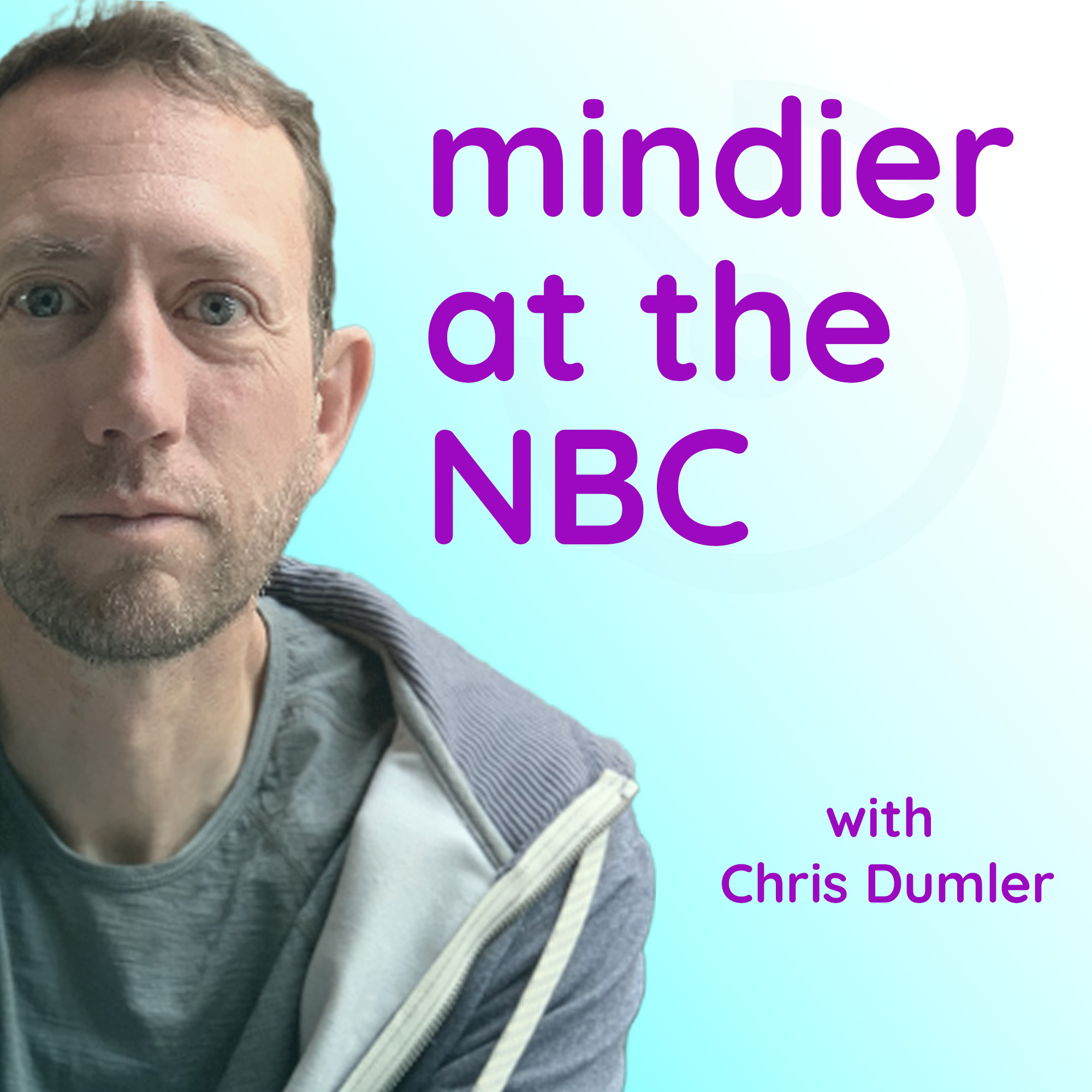Guided Meditation: Feel Flow
The Feel Flow technique: In this technique we bring our attention to the continuous movement and change that occurs in the internal and external body space. By practicing detecting movement, we might become more familiar with how pleasant, unpleasant, and neutral sensory experiences come and go.
Guided meditation for students of the mindfulness training at the Nelson Buddhist Centre in early 2022.
Transcript
The unified mindfulness definition of flow revolves around the idea of
Speaker:change movement and impermanence.
Speaker:It's pretty much the changing or moving nature of things with
Speaker:the one exception of vanishing.
Speaker:Something that vanishes is a little bit of a special case, but we can
Speaker:think of flow as being available in any of the sense categories see
Speaker:here, or feel internal or external.
Speaker:so it might manifest in the visual images that kind of come and go and morph and
Speaker:are not really solid that we see, or even in the little floater sensations when
Speaker:your eyes are closed and you might see colors or little moving bits, uh, that
Speaker:would all be flowing, hearing traffic.
Speaker:Cars coming into your auditory experience and moving out of your auditory experience
Speaker:as they get further away, that's all flow feeling pain in the body as a
Speaker:muscle cramps up, but then it starts to release, or maybe it starts to intensify.
Speaker:That would be considered flow.
Speaker:and if we zoomed out, it would be, you know, mountains, decaying, uh,
Speaker:might include sunrise and sunset and all of these things where there's
Speaker:movement and change children growing up, all of that kind of thing.
Speaker:So let's practice with it.
Speaker:Go ahead and assume a posture.
Speaker:If you're sitting, you can lengthen your spine and relax your shoulders and arms.
Speaker:If you're in an alternative position, it's important just to be alert and awake,
Speaker:you can practice with your eyes open or your eyes closed.
Speaker:And the technique we're going to use today is feel flow.
Speaker:We're gonna focus on the feel space here.
Speaker:So bring your attention to the body.
Speaker:And to start off, let's just go to something that's usually
Speaker:pretty accessible, which is the breath and acknowledge the
Speaker:flowing sensation of the breath.
Speaker:This might be a little bit different than noticing the physical sensation of the
Speaker:breath, which would be feel in this case.
Speaker:We're going to notice the flowing nature of the breath, that movement quality.
Speaker:And so as you pay attention to that, you might notice the flow of air
Speaker:in, through the nose or the mouth or out of the nose in the mouth.
Speaker:You might notice the movement of.
Speaker:the chest, the rib cage, all the muscles that move when breathing.
Speaker:To help with the concentration here, you can use a label if you'd like,
Speaker:as you identify and acknowledge some movement or some aspect of
Speaker:change, you can apply the label flow.
Speaker:sometimes working with the breath and the exhale.
Speaker:You might notice.
Speaker:Something like relaxation, which is not our intended focus area.
Speaker:However, if you notice something that was less relaxed and it's becoming more
Speaker:relaxed, that laxed, that would be a type of change and would qualify as flow.
Speaker:You can allow your attention to move around the body.
Speaker:As you explore this,
Speaker:you might notice a type of vibratory sensation that
Speaker:sometimes is across the body.
Speaker:It's common to feel this type of sensation when getting out of.
Speaker:Hot tub or bath where your skin is reacting with the air in some way.
Speaker:And it creates a little bit of a fizzy bubbly sensation
Speaker:or any kind of tingly sensation that might occur.
Speaker:Sometimes can notice this after a hard workout.
Speaker:Feels like energy or something on the skin.
Speaker:Maybe these are just guesses at how to describe sensations.
Speaker:See what
Speaker:you detect.
Speaker:You can also turn your attention inward, look for any emotional type sensations.
Speaker:So that might include interest, curiosity, gratitude, joy, pleasure.
Speaker:or confusion, uncertainty, pain, discomfort, boredom.
Speaker:If you notice any emotion, acknowledge it and see if you
Speaker:can detect the changing nature.
Speaker:Does it intensify?
Speaker:Does it subside?
Speaker:Is it brighter?
Speaker:Calmer, whatever your
Speaker:words are.
Speaker:There's a common phrase that floats around.
Speaker:Sometimes that goes something like this too shall pass.
Speaker:That's a nice intellectual way to think of things changing, but we can make
Speaker:that actually a little bit deeper.
Speaker:in a practice like this, where we pay attention to this too, is passing actually
Speaker:experiencing the change rather than just imagine something changing in the future.
Speaker:Training
Speaker:your attention around flow.
Speaker:Learning to pay attention to the change and become familiar with it can help
Speaker:us in situations where we feel stuck, whether that's trying to work out a
Speaker:challenging problem or something like writer's block, we can familiarize
Speaker:ourself with this changing and release.
Speaker:Blockages
Speaker:in a way, this type of familiarity helps increase the equanimity skill,
Speaker:allowing any of the sensations to come and go.
Speaker:detecting subtleties
Speaker:in the body or in any of the experiences where
Speaker:you're noticing the difference between a physical sensation
Speaker:and a flowing sensation.
Speaker:describing qualities
Speaker:that helps you develop sensory clarity.
Speaker:Being able to acknowledge the sensation,
Speaker:rest with it for a moment or two.
Speaker:And then.
Speaker:Maybe apply a label like flow that helps strengthen
Speaker:the concentration.
Speaker:Good work.
Speaker:As we come to a close here, see if you can carry any of the
Speaker:benefits from this practice into the rest of the day, noticing the
Speaker:changing nature of the experience.
Speaker:if it was challenging, confusing, uncomfortable.
Speaker:see if you can also recognize the changing nature of that experience and
Speaker:maybe create that with some acceptance

